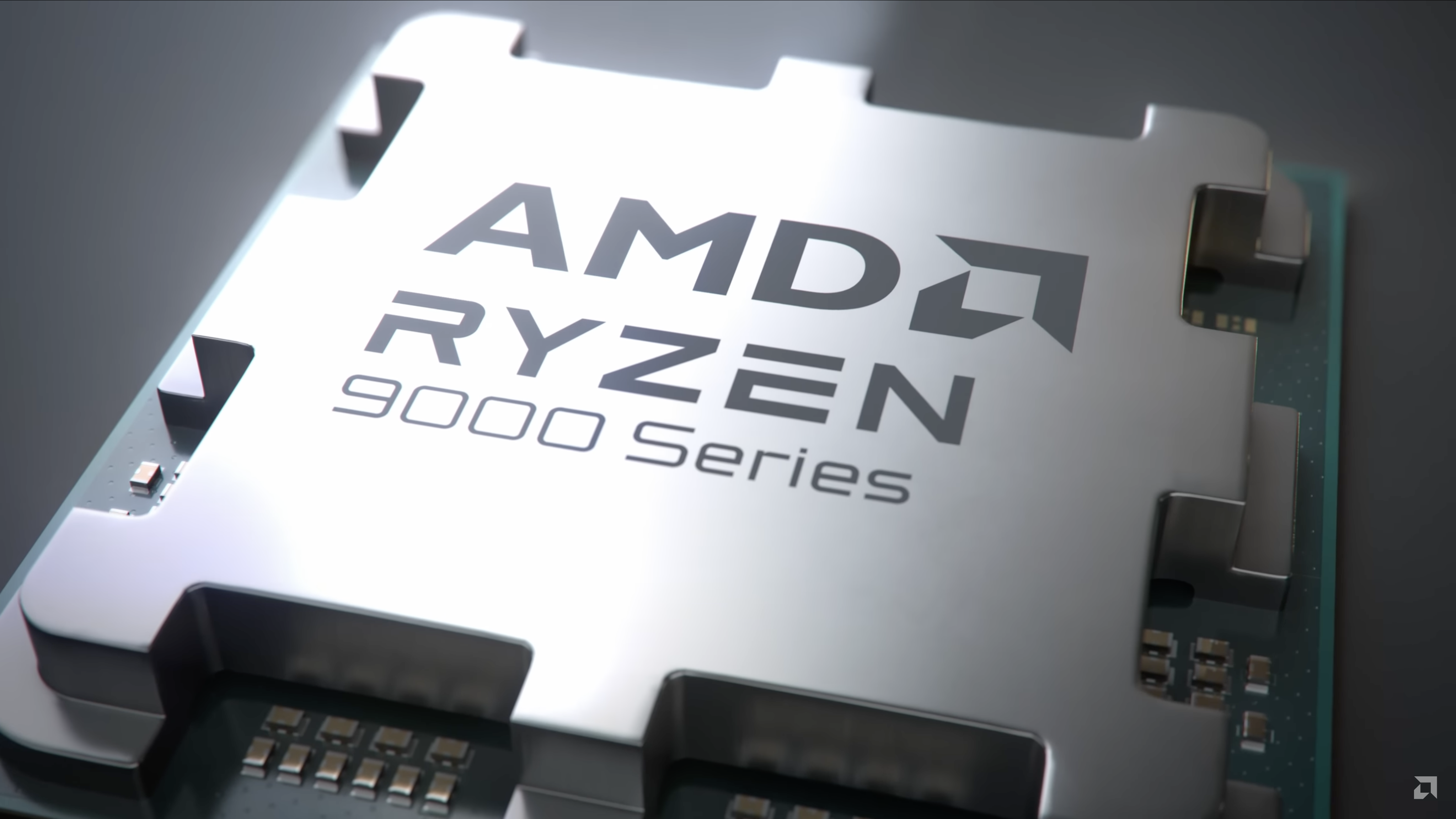Unannounced Ryzen 9 9950X3D dominates Ryzen 7 9800X3D in Factorio benchmark — Ryzen 9000X3D flagship up to 18% faster than current fastest gaming CPU

AMD recently launched the Ryzen 7 9800X3D, one of the best CPUs. However, a benchmark result for the Ryzen 9950X3D, AMD’s not-yet-announced 3D V-Cache flagship, has appeared in a Factorio benchmark database (via VideoCardz).
The database, FactorioBox, contains thousands of community-submitted results for Factorio benchmarks run on specific maps, including one for the 9950X3D run on the Sla_Flame 10k map, the most popular one with over 11,000 results as of the time of writing. FactorioBox listed a few details about the 9950X3D-equipped PC but noted it had 256 GB of memory running at 6,000 MHz.
The 9950X3D achieved 655 updates per second (UPS), the highest result ever recorded for Sla_Flame 10k, with the exception of an extreme outlier result showing a 7800X3D that got 1,000 UPS, over double that of the next highest 7800X3D. Given the unique nature of Factorio’s gameplay, it’s much easier to achieve a good framerate than to keep the game running in real-time. Hence, UPS is the measure of performance rather than FPS.
| Row 0 - Cell 0 | Average | Best Score |
| Ryzen 9 9950X3D | 655 UPS | 655 UPS |
| Ryzen 7 9800X3D | 461 UPS | 560 UPS |
| Ryzen 7 7800X3D | 389 UPS | 598 UPS |
| Ryzen 9 7950X3D | 333 UPS | 471 UPS |
Overall, the 9950X3D result is much higher than those seen on other CPUs. On average, across all game versions, the 9800X3D scores 461 UPS, and the single fastest result is 560 UPS, indicating that the 9950X3D is the faster CPU in Factorio. It’s also got a significant lead over the 7950X3D, which averages a UPS of 333 and peaks at 471; the 7800X3D was beaten too with an average of 389 UPS, while the best result (other than that 1000 UPS submission) showed 598 UPS.
The 9950X3D was faster than the 9800X3D, which is significant since the 7950X3D can be slower than the 7800X3D. Factorio isn’t the only game where the 7800X3D is the better chip for gaming than the 16-core model, and in our review of the 9800X3D, we found that the 7800X3D performs noticeably better than the 7950X3D in four games, while the 7950X3D only performed better in two (and by slimmer margins). Perhaps the 9950X3D could consistently outperform the 7800X3D, though it’s hard to say based on a single game.
The 9950X3D is anticipated to arrive early next year, potentially with an announcement at CES in January. If the 9800X3D’s $30 price bump over the 7800X3D’s MSRP is anything to go by, the 9950X3D will likely match or exceed the 7950X3D’s $699 price tag at launch.
Get Tom's Hardware's best news and in-depth reviews, straight to your inbox.

Matthew Connatser is a freelancing writer for Tom's Hardware US. He writes articles about CPUs, GPUs, SSDs, and computers in general.
-
SonoraTechnical Reply
Is that true? I thought it was like the previous X3D generation where 8 cores got the cache and 8 didn't. If they truly have the V-Cache on both of the 8 core CCDs that is a major change.-Fran- said:The dual VCache'd CCD cope has begun!
Regards :p -
SonoraTechnical modified the above comment to reflect surprise if V-Cache were present on BOTH of the 8 core CCDs...Reply -
AngelusF Reply
Wasn't the point of having the second CCD without VCache that the extra cache silicon on top of the CPUs hobbled them so much? That's no longer the case, so surely the second CCD will have VCache as well now, won't it? Otherwise you run into the same old problems with Windows having a hard time trying to allocate threads to the appropriate CCD.SonoraTechnical said:modified the above comment to reflect surprise if V-Cache were present on BOTH of the 8 core CCDs... -
torbjorn.lindgren Reply
It's not been confirmed AFAIK but it's a frequent speculation/leak and there's been lots of hints that AMD could choose to do this.SonoraTechnical said:Is that true? I thought it was like the previous X3D generation where 8 cores got the cache and 8 didn't. If they truly have the V-Cache on both of the 8 core CCDs that is a major change.
Remember that the reason why AMD combined one core with and one core without V-Cache in the older 12/16-core models was because adding the V-Cache on top really hurt the thermals and thus frequency of the chip with V-Cache. Hence AMD tried to split the difference so the multi-die cpus had both some high frequency cores for productivity apps and some high cache cores for gaming.
Managing these dissimilar cores requires careful juggling and sometimes goes wrong (similar problems as having E and P-cores) which is one of the reasons why 7800X3D tended to be be the gaming champion.
With 9800X3D AMD has demonstrated that this limitation is mostly gone so reason for it is gone - and thus a 9950X3D where both dies have V-Cache is very likely to dominate one where only one has it in pretty much every workload (even the ones prefer frequency over cache is likely to be better off with frequency and cache!).
Yes, using two V-Cache enabled dies in the 12/16-core cpus will cost AMD a bit more to produce but the 12 & 16-core models are the consumer CPUs with the highest profit margin for AMD so shortchanging these users would be outright stupid by AMD. Not that AMD (and Intel) hasn't made plenty of stupid decisions, but, well, lets hope sanity prevails. -
Makaveli Why did you remove the 5800X3D numbers which show it producing higher performance than the 7800X3D. The source articles says this benchmark isn't reliable.Reply -
salgado18 Reply
At this point, Intel is almost irrelevant in gaming :)mac_angel said:why not show Intel's for some sort of comparison? -
Mama Changa Fingers crossed the 9900X3D is now going to be a good gaming cpu as well as show the same uplifts as 9800X3D did in productivity and is as strong at least as the 9900X. 9800X3D is on average faster than 9700X in productivity, which other than price sort of renders the 9700X useless. I would gladly pay the extra for the 9800x3D and in 3 months AMD will drop the price $50 once the pent-up demand has eased. This is what happened with 7800X3D and this time you'll have options for gaming like the 9950X3D and possibly 9900X3D if you also do a lot of productivity work too. So demand could be shared across the entire X3D range this time.Reply -
Gillerer The reason the 7950X3D didn't have V-Cache on both CCDs was that it didn't give better performance (as per AMD's internal testing), but not (mainly) because of lower frequency, but the added latency from CCD-to-CCD hops.Reply
If a game ever gets scheduled on cores on two different CCDs, the two hops thru the I/O die will kill performance, so you've already lost. Double the V-Cache could *maybe* scrape back some of the deficit, but would be sure to make the product more expensive. They thought it better to just try to do some trickery to make sure games are scheduled on a single CCD.